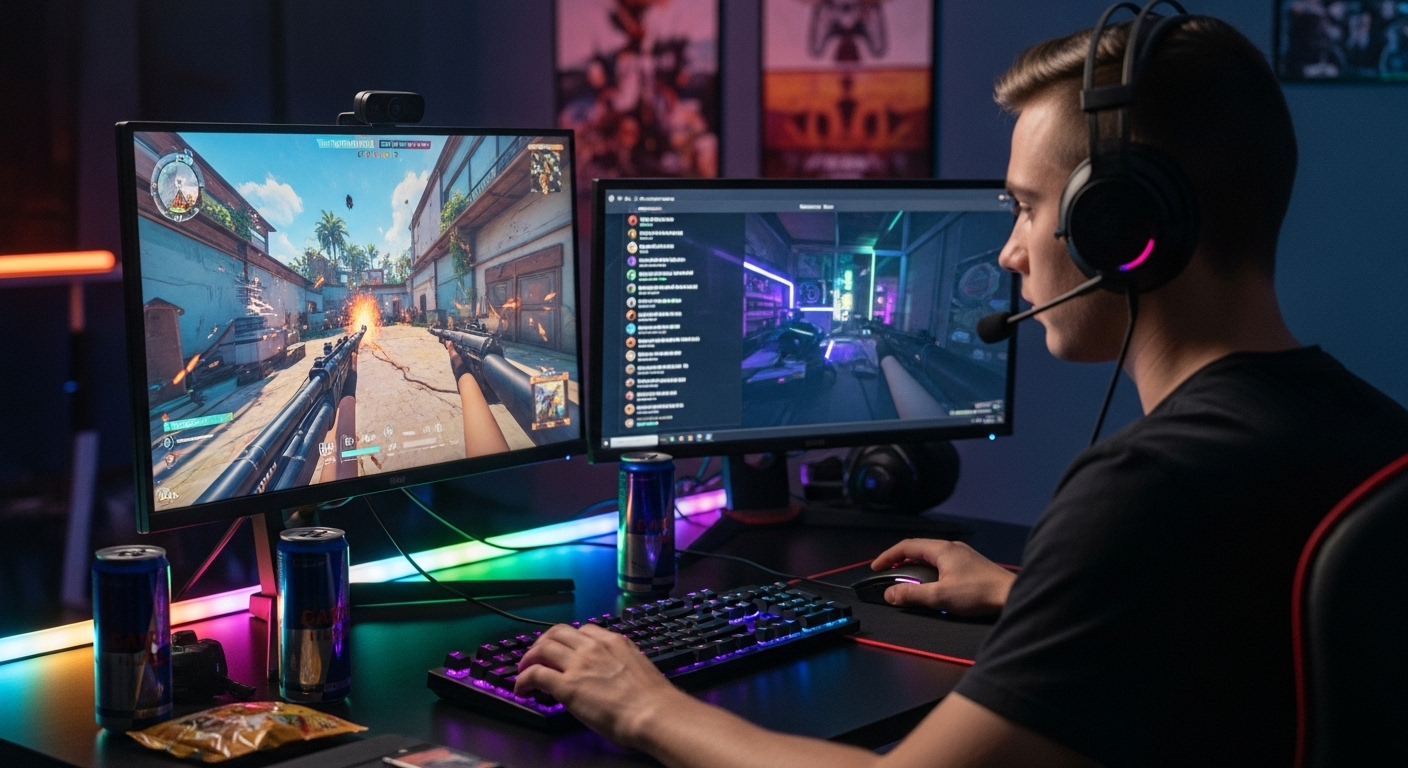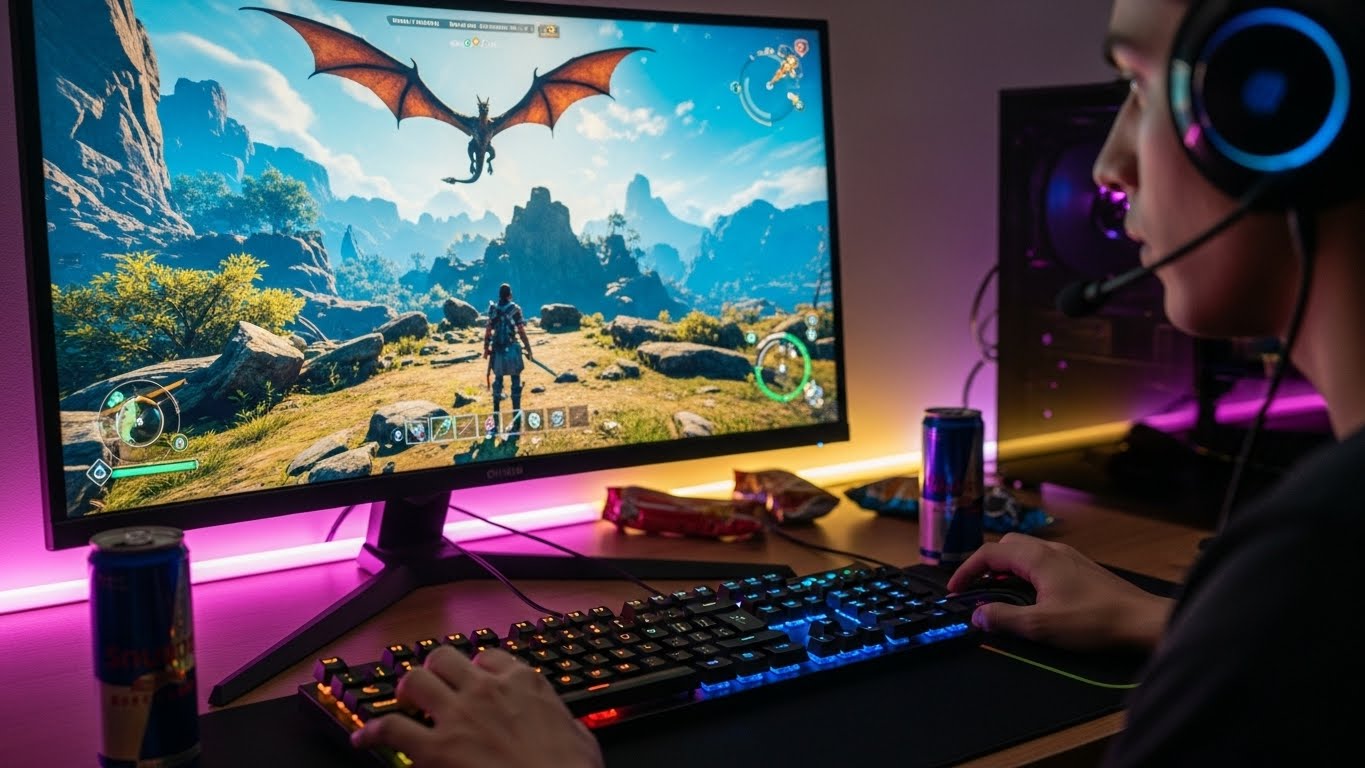Gaming, once regarded as a niche hobby, has evolved into a multibillion-dollar industry that shapes cultures, influences social behavior, and creates communities. What was once a pastime for a few has now blossomed into a major form of entertainment, bridging generations and bringing together people from diverse backgrounds across the world. In this post, we will explore the history of gaming, its impact on society, the psychology of gaming, and its role in modern culture, providing an in-depth look into the world of video games.
The Origins of Gaming: Humble Beginnings
The origins of video gaming can be traced back to the early 1950s, when computers first became advanced enough to perform calculations beyond basic tasks. At the time, games were simple, often created as experiments or programming challenges rather than entertainment. The first well-known arcade game, Pong, released in 1972, marked a pivotal moment in the history of gaming. The game was simple: two paddles and a ball, reminiscent of table tennis. But it was revolutionary at the time, capturing the attention of the public and giving birth to the video game industry as we know it today.
The 1980s: The Rise of Home Consoles
The 1980s marked the beginning of home gaming as we know it. With the introduction of the Nintendo Entertainment System (NES) in 1985, video games moved from arcades into living rooms. The NES, along with games like Super Mario Bros., The Legend of Zelda, and Metroid, defined a generation of gamers and cemented video gaming as a mainstream form of entertainment. This era also saw the rise of other companies like Sega, which released the Sega Genesis, further intensifying the competition between console manufacturers.
In these early years, gaming was primarily about arcade-style experiences: simple, action-packed, and focused on high scores. However, as technology advanced, so did the complexity of games. The storytelling and art direction of titles like Final Fantasy and Castlevania became more sophisticated, and gaming was slowly becoming an immersive experience rather than just a means to pass the time.
The 1990s: 3D Graphics and Online Multiplayer Gaming
The 1990s ushered in the era of 3D graphics, a leap that would forever change the gaming landscape. Sony’s PlayStation, launched in 1994, introduced 3D gaming to the masses with titles like Gran Turismo, Metal Gear Solid, and Final Fantasy VII. These games featured expansive worlds, complex characters, and intricate plots, showcasing the potential of gaming as a medium for storytelling.
Around the same time, the rise of personal computers and the internet led to the birth of online multiplayer games. Games like Doom, Warcraft, and StarCraft pioneered the concept of online gaming, where players from different parts of the world could connect, compete, and collaborate. The idea of gaming as a social activity was beginning to take shape, laying the groundwork for modern online communities and esports.
The 2000s: High-Definition Graphics and the Growth of Esports
By the turn of the century, gaming had entered the realm of high-definition graphics, and consoles like the PlayStation 2, Xbox, and GameCube offered increasingly sophisticated visuals and gameplay. Games like Halo 2 and Grand Theft Auto: San Andreas pushed the boundaries of what was possible in terms of graphics and open-world design. The mid-2000s also saw the launch of the Xbox 360 and PlayStation 3, both of which supported HD graphics, pushing the bar even higher.
One of the most significant changes during this era was the rise of esports. Competitive gaming, once a niche hobby, exploded into a global industry, with games like Counter-Strike, League of Legends, and Dota 2 attracting millions of viewers and players worldwide. Esports became more than just casual tournaments; it became a professional industry with sponsorships, streaming platforms, and even universities offering scholarships to esports athletes.
The Modern Era: Open Worlds, Streaming, and Virtual Reality
In the 2010s and beyond, gaming entered what could be described as the golden age of technological advancement and innovation. Consoles like the PlayStation 4, Xbox One, and the Nintendo Switch provided even more immersive experiences, with a greater focus on open-world games. Titles like The Witcher 3, Red Dead Redemption 2, and Breath of the Wild offered expansive, living worlds that players could explore at their own pace, deepening the player’s immersion and involvement.
Streaming also changed the way people interacted with gaming. Platforms like Twitch and YouTube allowed gamers to stream their gameplay to millions of viewers, fostering a new generation of content creators. This led to the rise of “Let’s Play” videos, live streams, and speedruns, which allowed the gaming community to engage in new, innovative ways.
Moreover, the development of virtual reality (VR) and augmented reality (AR) gaming opened up new frontiers for immersive gameplay. Devices like the Oculus Rift, PlayStation VR, and HTC Vive offered experiences that were once thought impossible. VR gaming made players feel as though they were actually inside the game, offering a level of immersion that was previously unimaginable.
The Impact of Gaming on Society
Over the past few decades, video games have grown from a simple form of entertainment into a global cultural phenomenon. Gaming has not only changed the entertainment industry but has also had a profound impact on society at large.
Gaming as a Social Activity
One of the most significant cultural shifts brought on by gaming is its role as a social activity. Online multiplayer games, in particular, have created vast, interconnected communities. Games like Fortnite, Call of Duty, World of Warcraft, and Minecraft have brought together millions of players from all over the world. Players team up, form guilds or clans, and create lasting friendships, often building entire communities around specific games.
Moreover, gaming has become a way for people to connect with one another in ways that extend beyond the game itself. Platforms like Discord, Reddit, and Twitch allow gamers to communicate, discuss strategies, share fan art, and even support each other emotionally. These communities foster a sense of belonging and camaraderie that goes beyond just gaming itself.
The Influence of Gaming on Pop Culture
Gaming has also had a significant influence on pop culture. Iconic characters like Mario, Sonic the Hedgehog, and Link have become household names, often appearing in television shows, movies, and comics. Major franchises like Super Mario, Zelda, and Final Fantasy have created vast, intertwined universes that transcend the gaming world. The art, music, and narratives from these games have entered mainstream culture, with game soundtracks often being performed in concert halls.
The popularity of gaming has also led to the rise of gaming-related media, including live-action adaptations of games. Movies like Detective Pikachu, The Witcher TV series, and The Last of Us have shown that the stories and characters from video games can translate to other forms of media, appealing to both gamers and non-gamers alike.
Gaming’s Psychological Impact
While gaming has many positive benefits, such as improving cognitive skills, teamwork, and problem-solving abilities, it also has its psychological effects. Research has shown that video games can improve hand-eye coordination, increase creativity, and boost strategic thinking. Puzzle games and role-playing games, for example, require players to think critically and plan ahead.
On the other hand, there are concerns about the potential negative effects of excessive gaming. In some cases, video game addiction can lead to social isolation, sleep deprivation, and a decline in academic or professional performance. It is important for individuals to maintain a healthy balance between gaming and other aspects of life.
The Future of Gaming
Looking to the future, it’s clear that gaming will continue to evolve in exciting ways. Virtual reality (VR) and augmented reality (AR) are expected to play an even larger role in gaming, offering experiences that are more immersive and interactive than ever before. Cloud gaming, powered by 5G technology, will allow players to access games from any device, without the need for high-end hardware. Additionally, artificial intelligence (AI) and machine learning will create more dynamic, reactive worlds in games, where NPCs (non-playable characters) can adapt to the player’s behavior in real-time.
Another exciting development is the potential for games to become even more integrated into our daily lives. As augmented reality continues to advance, we may see games that blend seamlessly with the real world, allowing us to play while going about our everyday activities. Imagine playing a treasure hunt game in your local park, where the environment is transformed into a virtual landscape through your smartphone or AR glasses.
Conclusion: Gaming’s Enduring Legacy
From its humble beginnings in arcades to its current status as a global cultural force, gaming has come a long way. The industry has grown exponentially, creating new forms of entertainment, education, and social interaction. Gaming continues to impact not just entertainment but technology, psychology, and even politics. It’s a powerful force that shows no signs of slowing down.
The future of gaming is filled with endless possibilities, from hyper-realistic virtual worlds to entirely new ways of playing and interacting with others. As gaming continues to evolve, it will undoubtedly play an even greater role in shaping our world and how we experience entertainment. Whether you’re a casual player or a dedicated gamer, one thing is clear—video games are here to stay, and they are more important than ever before.



